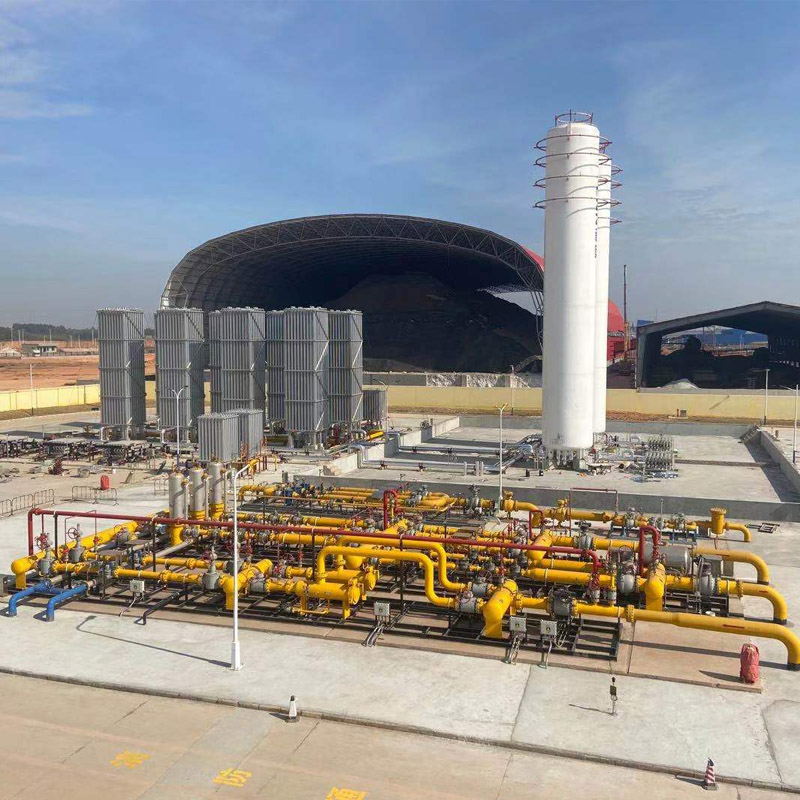
Dec . 15, 2024 10:30
Back to list
صمام تخفيض الضغط
Pressure Reducing Valve A Comprehensive Overview
In various industrial and residential applications, managing and controlling pressure is of utmost importance for safety, efficiency, and operational reliability. One of the key components used for this purpose is the pressure reducing valve (PRV), also known in Arabic as صمام تخفيض الضغط. This critical device plays a vital role in regulating and maintaining a steady pressure within a system, ensuring optimal performance and protection from potential hazards associated with pressure fluctuations.
Understanding Pressure Reducing Valves
A pressure reducing valve is specifically designed to automatically reduce the input pressure from a source, be it a water supply, gas line, or any other pressurized system, to a desired output pressure. This is essential for protecting downstream equipment and ensuring the system operates within its specified pressure range. PRVs are used in a wide variety of applications, from regulating water pressure in household plumbing systems to controlling pressure in industrial processes.
How Do Pressure Reducing Valves Work?
The fundamental working principle of a PRV involves the use of a spring-loaded diaphragm or piston mechanism. When high pressure enters the valve, it exerts force on the diaphragm or piston, causing it to move. The valve opens or closes based on the pressure requirement, diverting excess pressure upstream while allowing the desired pressure to flow downstream. The spring component provides the necessary resistance to regulate the output pressure accurately.
When the downstream pressure rises above the preset level, the diaphragm or piston moves further, increasingly restricting the flow, which stabilizes the pressure. Conversely, if the downstream pressure drops, the spring pushes the diaphragm or piston back, allowing more flow to maintain the set pressure. This self-regulating action is what makes PRVs invaluable in pressure management.
Applications of Pressure Reducing Valves
1. Water Distribution Systems In municipal water supply systems, PRVs maintain consistent water pressure to households and businesses, preventing pipe bursts and ensuring a steady flow rate. They are crucial in preventing damage due to excessive water pressure.
2. Boiler Systems In steam and hot water boilers, PRVs control the pressure of steam, ensuring safe operation and preventing overpressure conditions that could lead to catastrophic failures.
3. Gas Regulation PRVs are also used in gas systems, regulating the pressure of natural gas or propane before it reaches appliances. Proper regulation is essential for safe and efficient combustion in heaters, stoves, and other gas-powered devices.
صمام تخفيض الضغط

4. Process Industries In manufacturing and chemical processing, PRVs help manage pressure in various production stages, providing consistent operating conditions that are crucial for product quality.
Benefits of Using Pressure Reducing Valves
The advantages of integrating PRVs into any pressurized system are manifold
- Safety By maintaining a safe operating pressure, PRVs significantly reduce the risk of accidents such as explosions or equipment damage due to overpressure.
- Efficiency Lowering and stabilizing pressure can improve the efficiency of the entire system, leading to energy savings and lower operational costs.
- Equipment Longevity By preventing pressure spikes and fluctuations, PRVs help extend the life of equipment, reducing maintenance costs and downtime.
- Regulatory Compliance Many industries are subject to strict regulations regarding pressure levels. PRVs help ensure compliance with these regulations, avoiding costly penalties.
Maintenance and Considerations
Like all mechanical devices, pressure reducing valves require regular maintenance to ensure optimal performance. Routine inspections should include checking for leaks, ensuring that the valve is free from debris, and verifying that the pressure settings are accurate. Additionally, selecting the appropriate type and size of PRV for a specific application is crucial for effective pressure management.
Conclusion
In summary, pressure reducing valves are indispensable components in modern pressure management systems across various industries. Their ability to maintain safe and stable pressure levels contributes significantly to operational efficiency and safety. As technology advances, the design and functionality of PRVs continue to evolve, promising even greater reliability and performance in the future. Proper understanding and application of these devices can lead to safer, more efficient systems that benefit both industries and everyday consumers alike.
Next:
Latest news
-
Safety Valve Spring-Loaded Design Overpressure ProtectionNewsJul.25,2025
-
Precision Voltage Regulator AC5 Accuracy Grade PerformanceNewsJul.25,2025
-
Natural Gas Pressure Regulating Skid Industrial Pipeline ApplicationsNewsJul.25,2025
-
Natural Gas Filter Stainless Steel Mesh Element DesignNewsJul.25,2025
-
Gas Pressure Regulator Valve Direct-Acting Spring-Loaded DesignNewsJul.25,2025
-
Decompression Equipment Multi-Stage Heat Exchange System DesignNewsJul.25,2025

